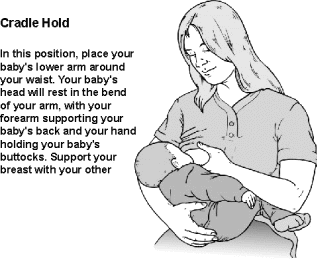What is breastfeeding on demand?
- Breastfeeding on demand literally means breastfeed the baby when the infant is hungry. Some infants shows signs of being hungry or in hunger such as mouthing1 or rooting2. Baby feeds about between 10 to 12 times in 24 hours. Each feeding may last between a time of 20 to 40 minutes. However, there is NO TIME LIMIT on duration or frequency of each feeds.
- Do not miss on night feed. Sleep in the same bed with the baby [To the mummy's out there, THANK YOU for sacrificing your sleep for us little brats when we are young as an infant]
- Allow sucking till baby sleeps and releases the nipple voluntarily
- Do not pull baby off the nipple. If the baby cries, put the baby back on the same breast
- Allow the baby to complete ONE FEED on ONE BREAST
- Offer the other breast for the next feeding
- Colostrum is more than enough for the baby until mature milk3 comes in
- No need of giving water, glucose or formula milk
- Avoid bottles, pacifiers or artificial nipples as this may cause nipple confusion
mouthing1:- putting hand or fists to mouth and making suckling motion with mouth
rooting2:-turning head in search of breast
mature milk3:- This is the final and longest-lasting stage of breast milk maturity. Water is the largest component of mature milk. All other components are diluted or diffused in the water. Fat is the second largest factor. Protein is about .8 to .9% of breast milk. Lactose is the primary carbohydrate. Enzymes, vitamins, minerals, hormones, growth factors and protective agents are also present
Breastfeeding Positions
Cradle hold :- commonly used position that is comfortable for most mothers.
Football hold:- Good for Twin delivery or Cesarean (C-section) birth

10 keys to successful Breastfeeding
- Sit upright with your back well supported. Use a pillow.
- Hold baby's head behind the shoulders
- Baby's head on your forearm
- Position baby underneath your breasts
- Baby's chest and your breast are touching
- Baby's whole body is facing you
- Position your nipple above baby's top lip
- See baby's respond with wide open mouth, tongue down
- Bring baby onto the breast
- Slightly push baby's back and shoulders
To observe:
(a) baby's bottom lip curls out
(b) baby's chin sink into your breast
(c) nipple fold under baby's top lip
Good/Optimal attachment Breastfeeding
- baby's mouth wide open
- most of the areola in the baby's mouth
- chin touching breast
- lower lips curled out like a fish mouth
- baby suckles, pauses and suckles again in slow deep sucks
Poor attachment Breastfeeding
- chin far away from the breast
- not much of areola in the baby's mouth
- mother feels pain when baby suckles


